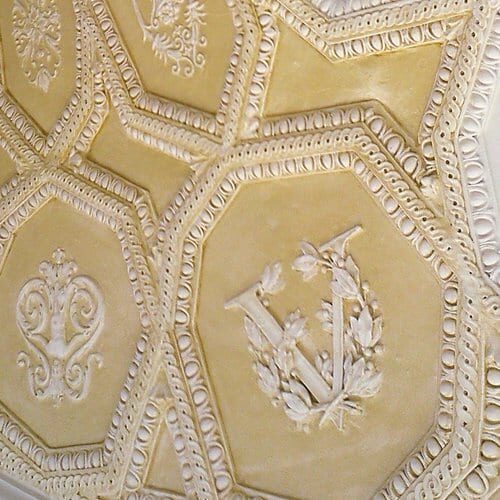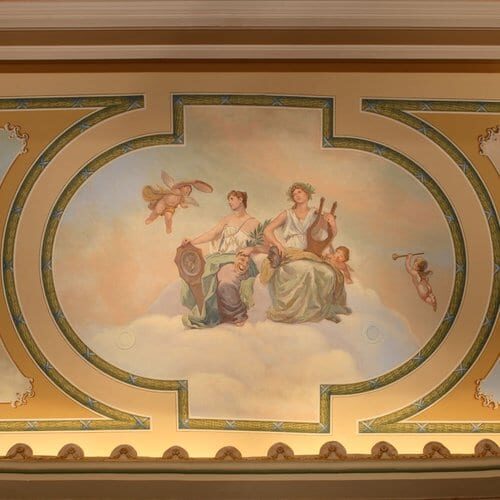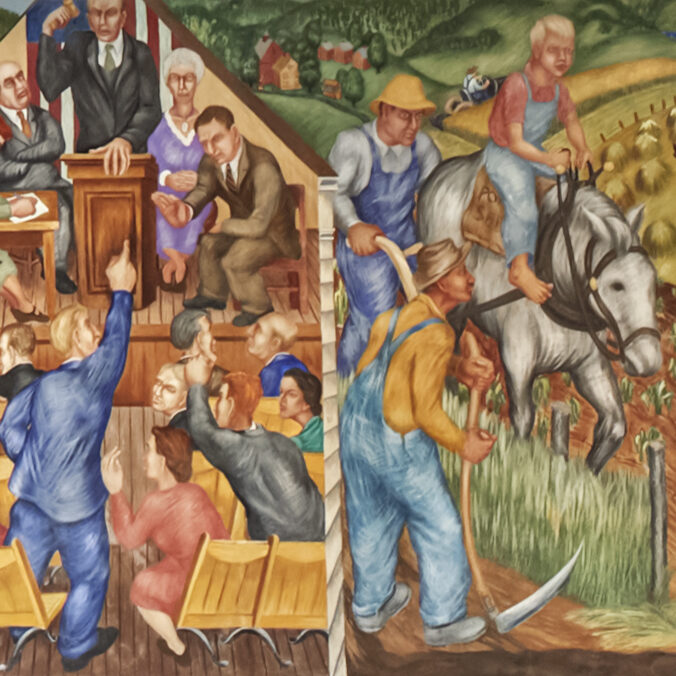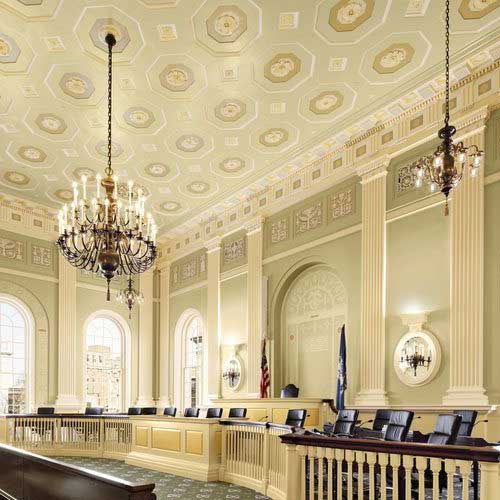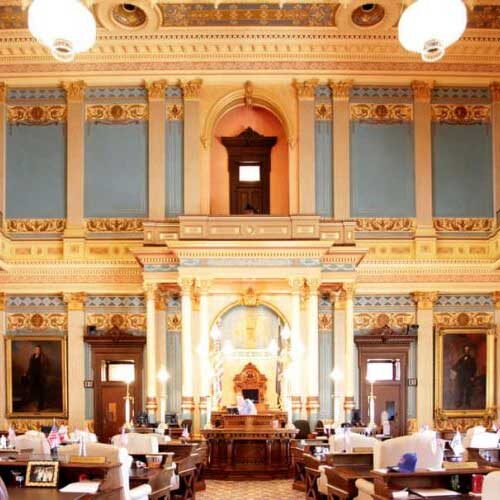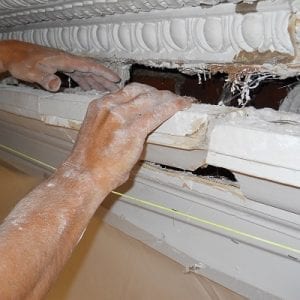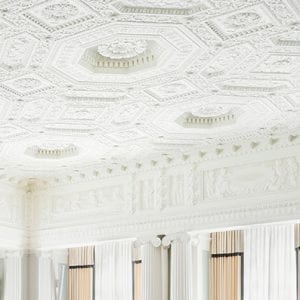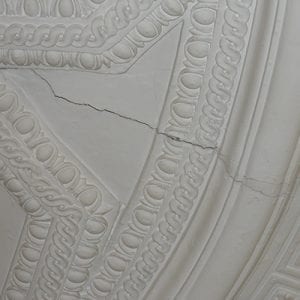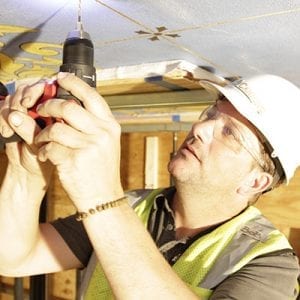Plaster Conditions Survey, Inspections And Assessment
Restore Your Plaster to its Original Greatness.
There are many reasons that aging ornamental and flat plaster substrates might crumble, swell, or otherwise fail in older or historic buildings. In order to reverse that damage, you first must understand what’s causing it. Only then can the underlying problem be removed so the plaster can be confidently stabilized and restored to its former glory.
A plaster conditions survey is designed to reveal the condition of your plaster and define the next steps that should be taken to stabilize and repair the work.
Repairing damaged plaster, particularly on historic buildings, can only be successful with the right materials and approach. That’s why for more than 45 years, owners and architects have turned to John Canning & Co. for our expertise in plaster surveying, stabilization, and analysis. Our accomplished, professional staff correctly assesses and defines the scope for preparing, restoring, and replacing plaster so the surface is ideal for the planned decorative finish.
Is a plaster conditions survey right for you? Speak with one of our preservation experts.
Our Process
In order to deliver the best results possible and the clearest guidance for next steps, we follow a four-pronged process when completing a plaster conditions survey for our clients. Take a look at what this process consists of below.
1. On-Site Inspection
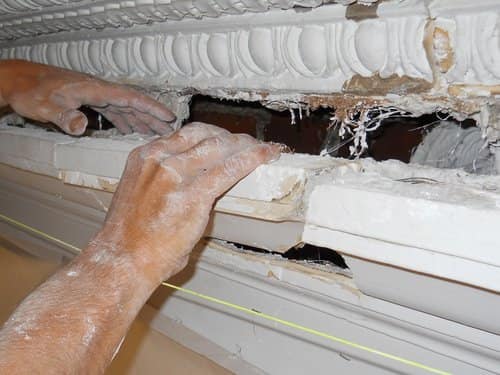 On-site inspection of the plaster, the lath supporting it, and the general surrounding environment reveal the condition of the plaster and, if damage exists, the source of the damage. Typically, on-site inspection takes anywhere from 1 to 3 days, depending on the location of the plaster, the extent of the damage, and whether or not scaffolding must be assembled in order to examine the plaster.
On-site inspection of the plaster, the lath supporting it, and the general surrounding environment reveal the condition of the plaster and, if damage exists, the source of the damage. Typically, on-site inspection takes anywhere from 1 to 3 days, depending on the location of the plaster, the extent of the damage, and whether or not scaffolding must be assembled in order to examine the plaster.
2. Laboratory Analysis
Laboratory analysis of samples collected during the on-site inspection, to determine the exact composition and nature of the plaster. For example, if the plaster is gypsum- or lime-based, the analysis may help us identify the original source of the plaster, such as whether it originated locally or not.
3. Archival Research
Archival research of primary and secondary sources (e.g., news articles, original specifications, and photographs) help us better understand the historical context of the plaster, how it was originally conceived, and whether any previous repairs had been made.
4. Report and Documentation
Reports and documentation are completed with the identified cause of the damage and a recommended scope of repairs and next steps—whether that includes reinforcement or replacement of the plaster. The report also includes a preliminary estimate on the cost of the repairs.
At John Canning & Co., we pride ourselves on our ability to interpret our analysis in the context of the complete structure and its historic fabric. Understanding the original purpose of the plaster, the role of light and shadow, the limits of the supporting structures, and the relationship between the plaster and other nearby ornamental elements is critical to effectively putting the results of a plaster conditions survey into action. Without this interpretation, the report is simply data, which can be difficult to act upon.
When to Conduct a Plaster Conditions Survey
Generally speaking, we would recommend a plaster conditions survey be completed for the following three primary reasons:
- Your plaster is failing
- You are planning a new structural work to a building that houses historic or decorative plaster
- You are planning other decorative work
Failing Plaster
Plaster can begin to fail for a variety of reasons. Water damage, age, and poor ventilation are among the more common causes, but other, less common causes might include failure in the supporting structure (keys, wood lath, or framing), failure in the original methods of attachment (such as the use of cut nails), or failure caused by new repairs or the use of modern materials.
If your plaster is failing, a plaster conditions survey can determine the cause of failure and establish the most efficient plan of action for stabilization and repair.
New Construction
Even if your plaster is structurally sound, if you are planning any kind of significant structural work or new construction to your building that may add or change the amount of stress that a wall receives, it is prudent to conduct a survey of your plaster. Some examples may include:
- Installation of air conditioning or other HVAC components
- Installation or change in lighting
- Installation of sprinklers or other fire prevention equipment
- Making fixes or changes to the walls, ceiling, or floor of your structure
Other Decorative Work
If you are already planning other decorative work for your structure (for example, decorative painting, wood graining, or other finishing) it may be wise to conduct a plaster conditions survey, especially if the other decorative work is to be completed on or near the plaster. Otherwise, failing plaster may later damage the decorative work that is currently in your focus, leading to costly repairs and frustration in the future.
Cost of Analysis
The exact cost of a full plaster conditions survey will vary depending on access, the number of samples to be analyzed in the lab following the on-site inspection, and a number of other factors.
Completing a plaster conditions survey right the first time, before any work has begun, brings tremendous value, removing the guesswork and providing a comprehensive roadmap for the project. It is an added value to projects in the design and development phase to prevent unforeseen costs during the construction phase and any potential life safety issues.
The best way for you to get an accurate picture of the cost of a plaster conditions survey and the documentation involved is to contact us directly.
Our Specialties
In addition to plaster conditions surveys and plaster restoration and stabilization, we specialize in a number of other complementary services, including:
Selected Projects
We were involved in plaster stabilization and creating a new ceiling and beam structure independent of the severely compromised Garrett Hall building.
Our conservation team restored the plaster work throughout the Colonial Theatre’s auditorium and public spaces, including casting ornamental plaster.
Our fine-art conservation team stabilized and conserved two, wall-sized WPA murals at UNH. The murals suffered varying degrees of deterioration and loss due to moisture intrusion and plaster substrate destabilization over nearly 80 years.
We provided historic paint analysis and restoration of decorative paint and plaster bringing Waterbury City Hall back to its historical glory.
John Canning & Co. scheduled all trades and performed specialty contracting to conserve and restore fine-art murals, ornamental plaster, gilding, decorative finishes and the parquet floor of the ornately decorated Cosmos Club ballroom in Washington, DC.
John Canning & Co. projects at Michigan Capitol 1989-92 and 2016 required expert woodgraining matching skills, and innovation in plaster reattachment and distemper paint conservation, and every other decorative painting skill.
Their expertise in plaster conservation not only met our high standards of restoration, but also went above and beyond with educating others on the process of restoration to our staff and guests.
The quality that Canning brings to their work is incredible, it’s something we have come to rely on.
The benefits that I find in hiring the John Canning Company is experience of course, you are the best that we work with, that’s why we always recommend you for plaster restoration and painting restoration and restoration of decorative finishes. Benefits include quality, experience and client education because you have been doing this for so long we really feel the clients benefit from having you involved in the project.

